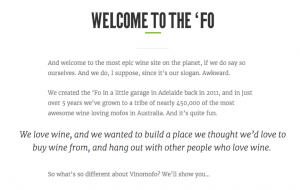I’ve managed to find my way around the Internet a fair bit during the lockdown. Videos, podcasts, articles and tutorials; you name it, I’ve seen it. Lately, I’ve been discovering random facts and I’ve concluded that Mother Nature is the best source for the weirdest facts.
For example: a caterpillar can eat up to 27,000 times its bodyweight in its lifetime.
It will consume everything it can, make itself ready for adulthood, and lay eggs, because as a caterpillar, it only has one job to do: survive.
I read this random fact and was reminded of something else I saw at a café in rural Australia.
It was one of those cheesy inspirational quote signs, you know the ones. Deep and thoughtful, it was perched above the coffee machine and written in a hipster font. It read:
“In order to become a butterfly, you’ve got to give up being a caterpillar.”
The conundrum of the caterpillar is a particularly apt analogy for brands in the age of COVID-19 – and it hit particularly close to home for Mutant, as we’ve been thinking of refreshing our own brand image for a long time. It was a decision between staying the successful caterpillar we were or becoming a butterfly.
Truth be told, we tussled with the decision. Our current branding is what has allowed us to grow for the past eight years, winning lots of new clients and bagging us multiple awards.
Why should we give up what we are, when it has been proven to be successful?
In the end, we decided it was time to change. We needed to unveil who we have become as an agency, while still maintaining what we started out as, all while showing what we can offer businesses in uncertain times.
As our name suggests, it was time to evolve.
So, when it comes to rebranding and updating your communications strategy, here are a few key questions you should ask yourself:
Does your branding reflect who you are now?
Businesses evolve, and so do their offerings. What you may have started out as might not be indicative of your present state. If that’s the case, you should objectively examine what your brand says about you visually.
Mutant started as a PR agency in 2012. Some of our first clients were corporate and tech names, and our muted, toned-down branding reflected that. Since then, we’ve built up one of the best content teams in SEA, as well as branding and digital marketing functions.
The brands we work with now are diverse, including clients across the lifestyle, consumer, and back to our roots, in tech and corporate verticals. Upon further examination, we realised our branding just didn’t match up to our current identity, and that had to change.
Does it look good?
This sounds like a stupid question, but it’s a perfectly valid one. Imagine your brand as a sports car. It is perfectly tuned, efficient, and performs well – but if the paint is faded on the outside, people will never look at it twice.
Mutant’s original branding was faded (literally, the green had a murky yellowish/green tinge to it). It simply wasn’t communicating the vibrance of our stellar team, and attitude towards work.
Is your branding flexible enough to grow?
Brand equity is something that a lot of people believe comes from consistency in applying your brand, making sure you don’t mess around with logos or colours – that sort of thing. And for the most part, that’s correct.
However, consistency doesn’t mean having to use the exact same branding or logos until the end of time. Brands refresh themselves in order to ensure they remain relevant and are able to future-proof themselves. Over the past few years, we’ve become an international agency with an awesome team in Kuala Lumpur. So we wanted to ensure that if we were to expand across Southeast Asia, our new look should be able to incorporate any sub-brands or new offerings that might come about.
Is now really the right time to do a rebrand?
In short, yes. Now is the best time to do it. Research shows businesses that pour more love into their brand and communications (whilst adapting their business model) will be the ones who come out the other side of COVID-19 stronger than ever. This rings true whether you’re a brewery fundamentally changing its sales model, or a PR company trying to conjure a brand identity that captures the full breadth of its services.
Eyes are on screens, the audience is captive (literally!) and people are consuming information like never before. In a sea of uncertainty, your brand needs to be bold to stand out and communicate its updated identity proudly, loudly and effectively.
Unless, of course, you want to stay a caterpillar.
Ask us how we can help your branding efforts by contacting us at [email protected]




